It was wet and cold but good weather for frogs and snails
The inclement weather probably accounted for the fact that Juanita and I were on our own last Saturday night and even we decided to take a shortened walk via Lennox Cr to McClelland’s lookout. However, the rain certainly didn’t discourage two groups of nocturnal animals that love moist weather. The robust whistling frog (Austrochaperina robusta) was calling continuously all around Lennox Cr.
This small frog is seldom seen (I have never seen one!) but is one of the most familiar nighttime sounds around Paluma whenever the weather is wet. We got within half a meter of several calling individuals but they were very well hidden. Another common frog around Paluma that is very noisy but highly secretive is the southern ornate nursery frog (Cophixalus ornatus). It too could be heard during the walk but much less frequently and as usual we did not see one (although I did spot one once in my garden last year). Have a listen to the calls below and see if they sound familiar.
Although it was not calling on Saturday night we did spot our resident yellow-thighed tree frog hanging out near our concrete wash-tub pond at home at the end of the walk.
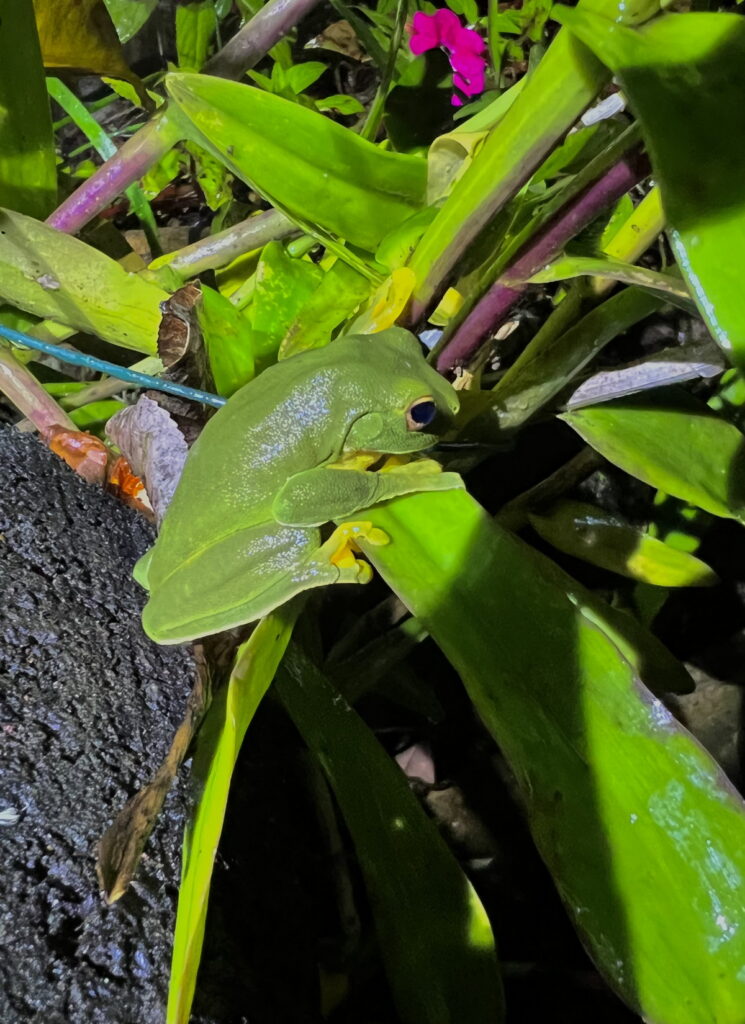
The other group of animals that reliably comes out at night, especially when it’s wet, is land snails. Australia has a very rich diversity of endemic land snails ranging from ones with full-sized shells to semi-slugs with a very small vestigial shell that they cannot retreat into and is normally covered by a layer of tissue. We saw two snail species and my best guess is that they were both locally endemic snails named after our village!

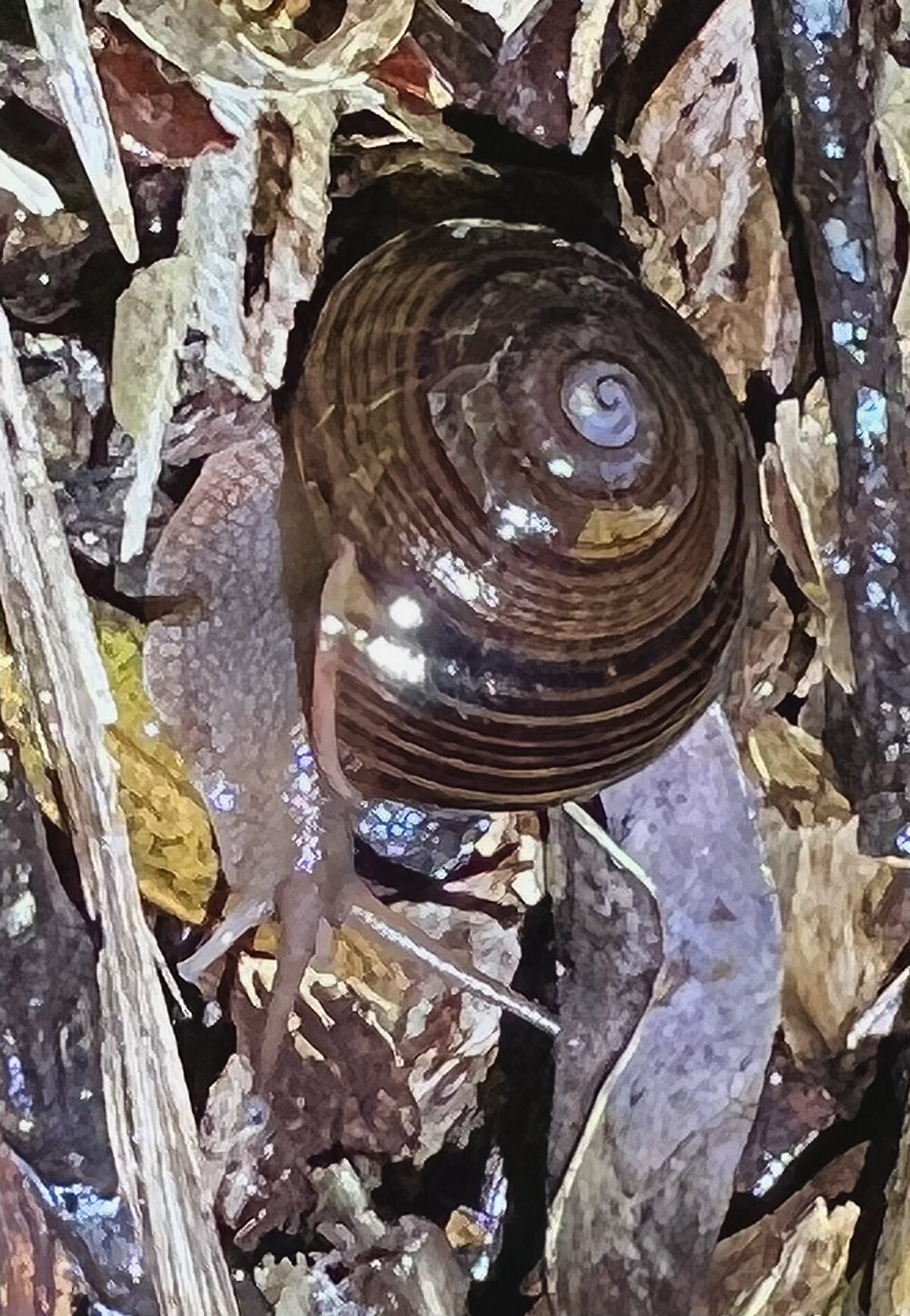
Dark Paluma banded snail (Steorra jimfergusoni)


Paluma semi-slug (Fastosarion paluma). Note the orange vestigial shell slightly exposed in the right hand image.
Using UV torches has become de rigueur on our night walks and while we did not come across any of the striking fluorescent blue liverworts that we often see on the H-Track, a couple of trees had strikingly fluorescent lichens. Juanita took several pictures and then returned on Sunday morning to get comparative daytime shots of the same patches. The difference is amazing.
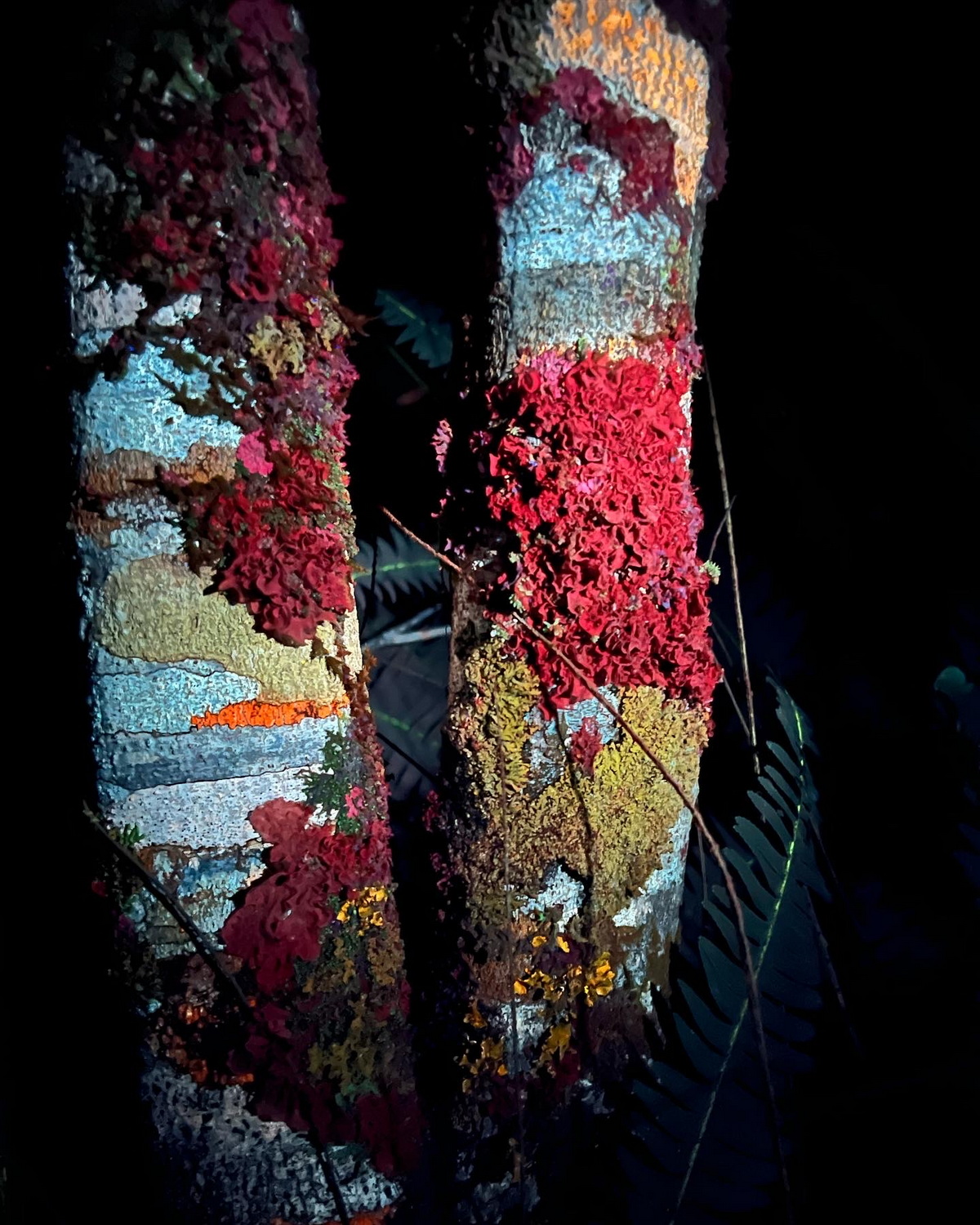
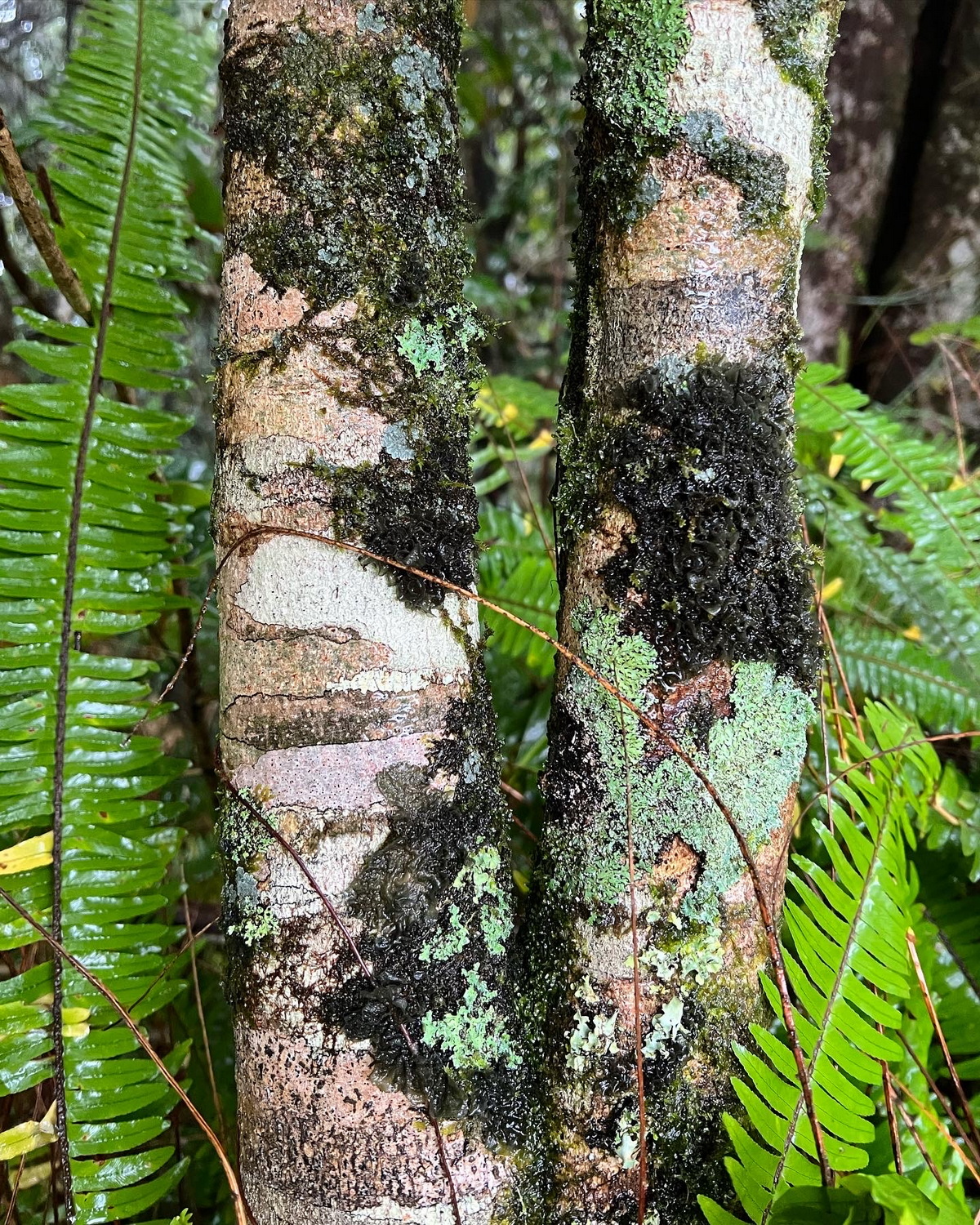

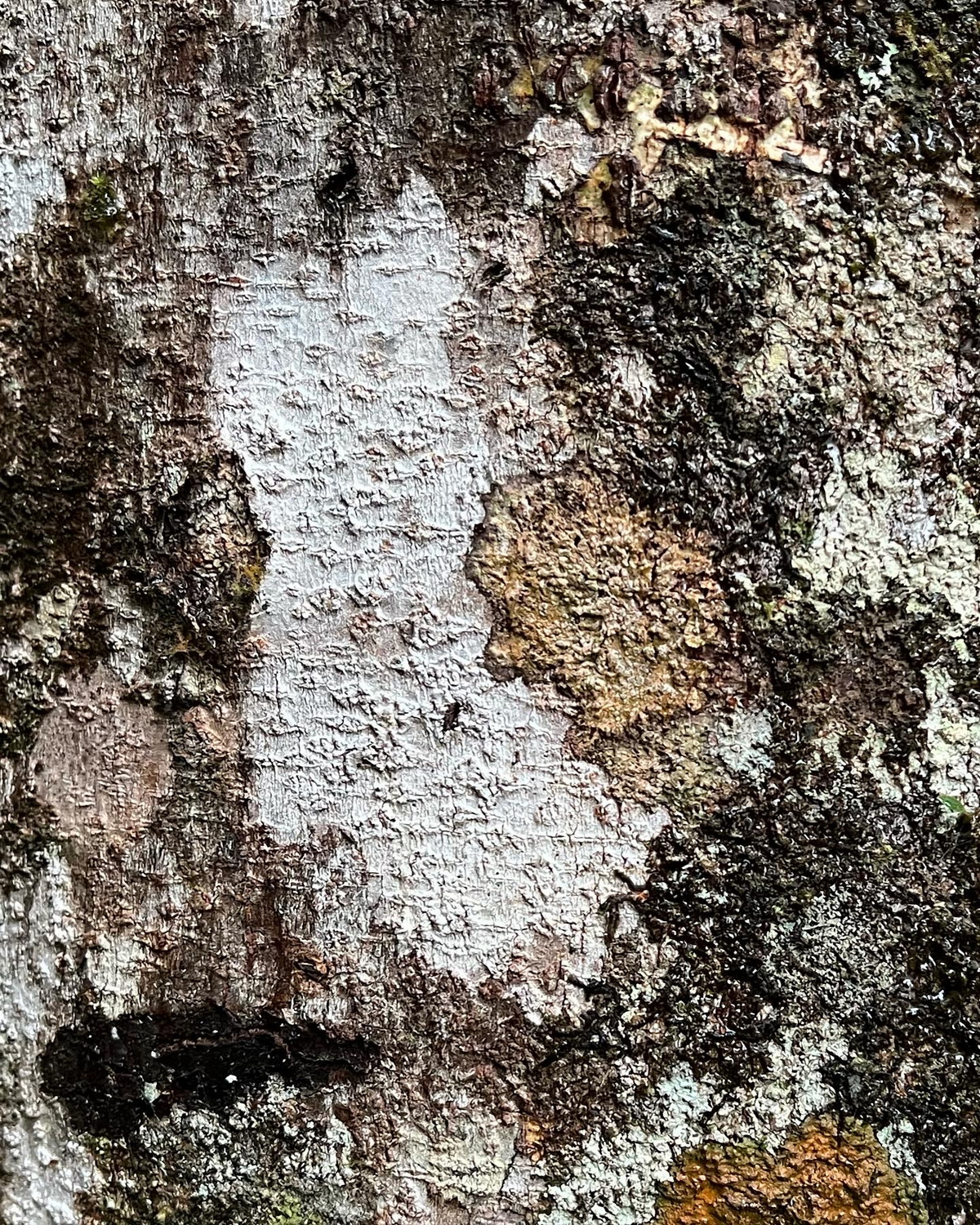
Fluorescent lichen on trees under UV light (left) and during the day (right). Photos by Juanita Poletto
We will have another night walk in around 2 months time and would love some company if you are up in Paluma and feel like a night-time stroll. We always seem to find something interesting!
Text by Jamie Oliver; photos by Jamie Oliver unless indicated

Kia ora from Aotearoa New Zealand. Your photos of the lichen inspired a nighttime walk around with a UV thank you! Fascinating to see the bush in a different light, literally and metaphorically. The glowworm threads were the most dramatic, however a yellow lichen that shows as quite a vibrant red ws also quite impressive. What kind of UV torch/light are you using to have such clear images just the lichen colours? Our makes everything not luminescent have a purple hue so I’m keen to know of any alternatives. Thank you again!
Hi Vanessa,
Thanks for your comment. The UV torch we use is called the Lumenshooter and is available on Amazon. However, any torch that advertises its wavelength as 365nm should be fine
I have about 3 nursery frogs that live in our front yard pond. We see them on a regular basis. They’re very little and very cute.
4 Smith Crescent.
Thanks Jamie and Juanita, I enjoyed the frog audio and was amazed at the difference in colours with the UV light. Hoping to join you next night walk.
Visited Colwyn in Cairns this week and it was lovely to see her and her new studio. Had some great biscuits just out of the oven – a new recipe I’m told. Happy to have them again next visit Colwyn.
What a rich and rewarding night. Thank you for sharing your amazing photos with us. How I miss those froggie concerts!
Thank you for the frog audio. I now know what I am listening too.
Thanks for uploading the frog calls Jamie. We have been hearing these calls for years from the back deck wondering what was making them!
Great photos! And interesting that one patch of lichen seems to have two different areas of fluorescence…
Regards, Andi & Will Cairns